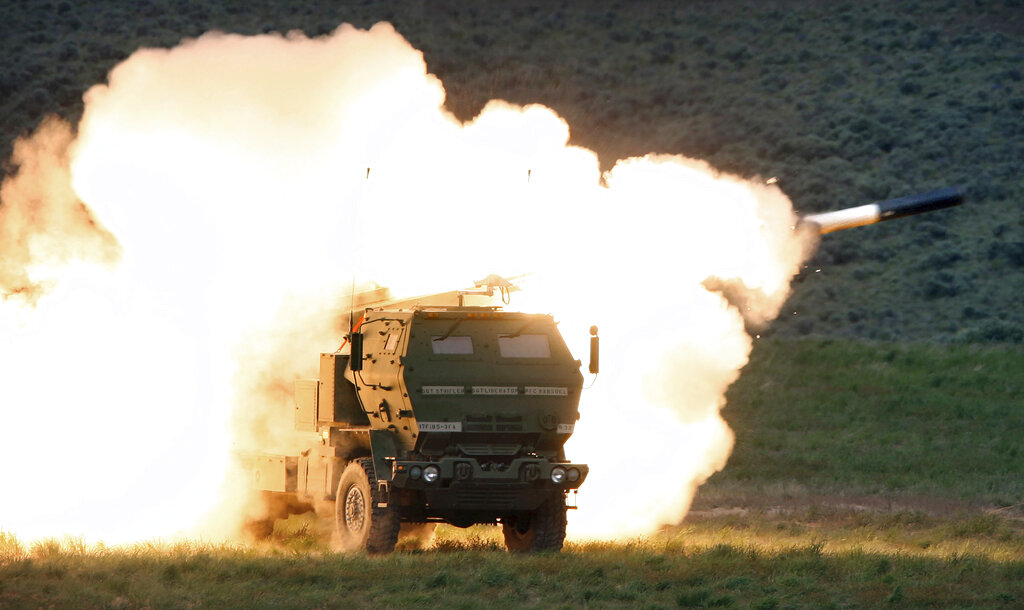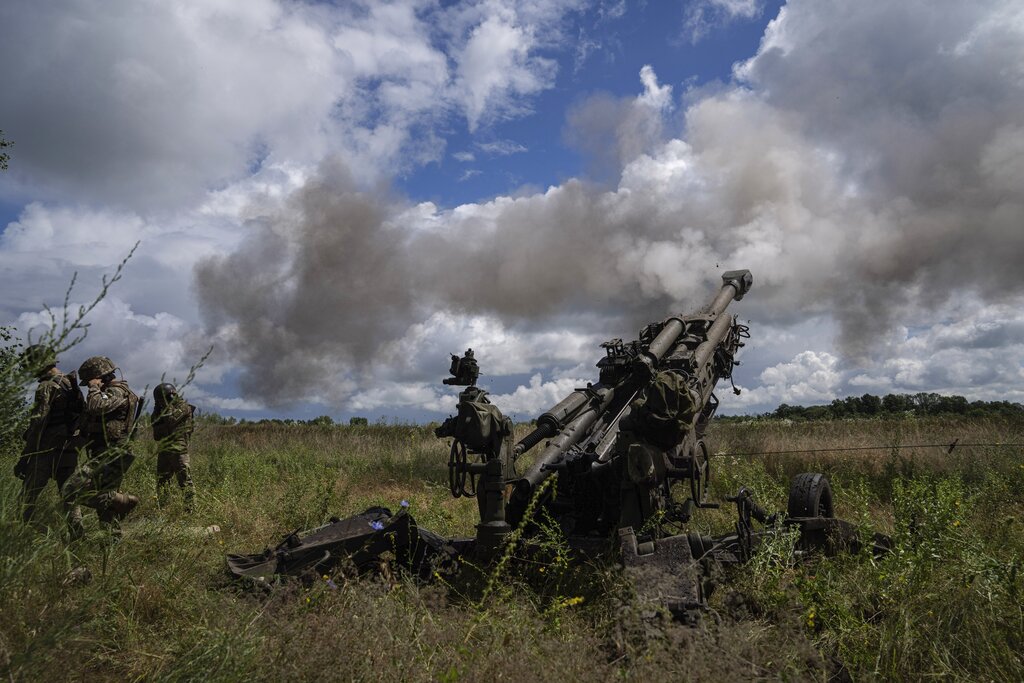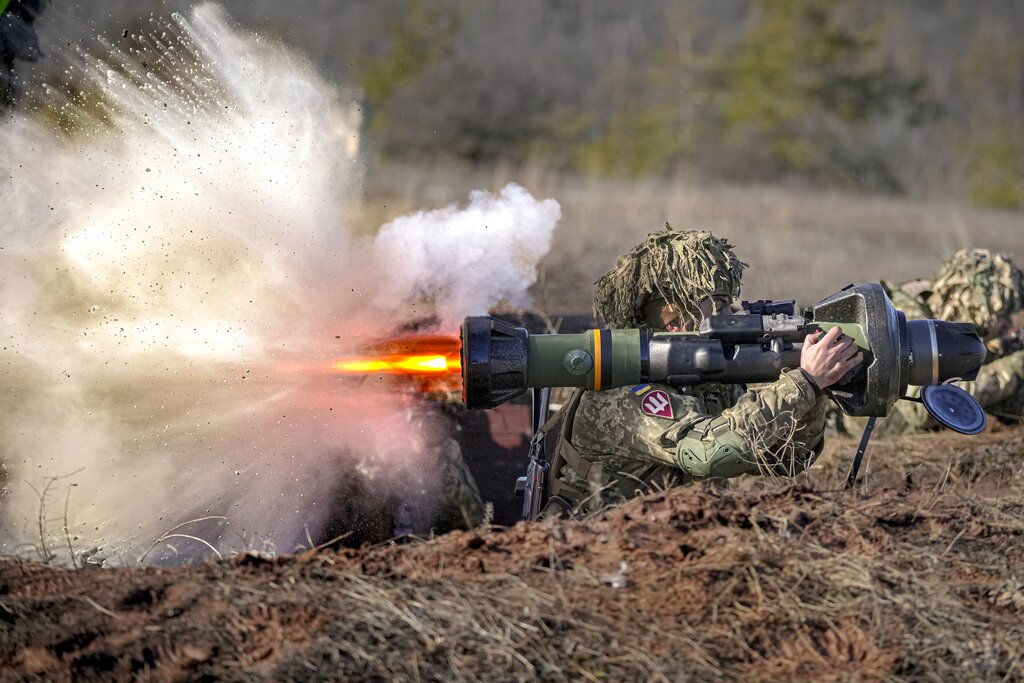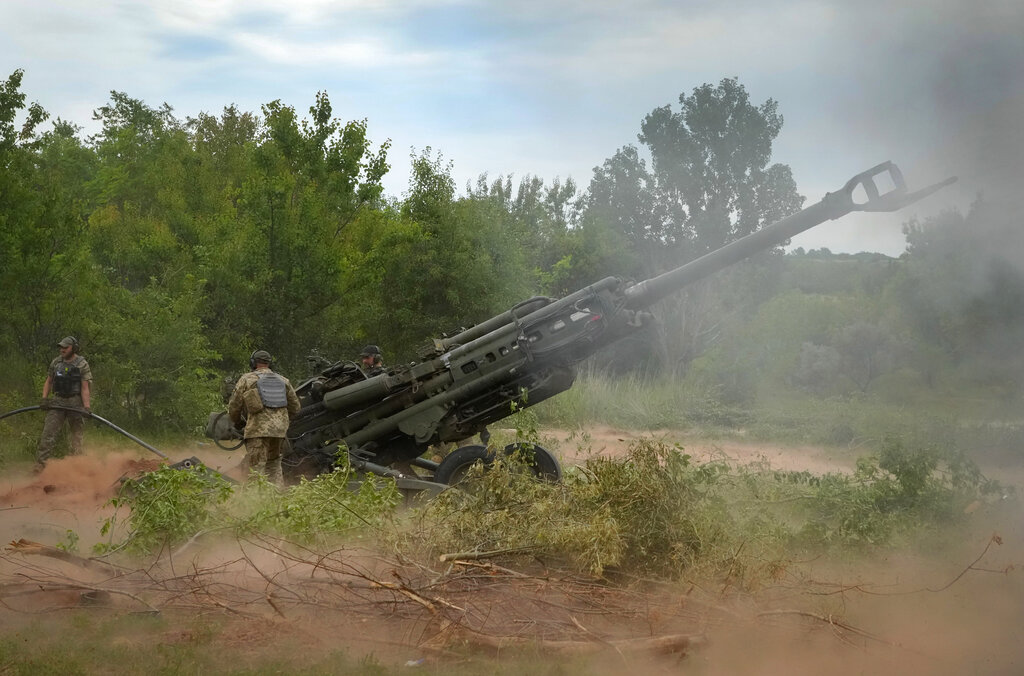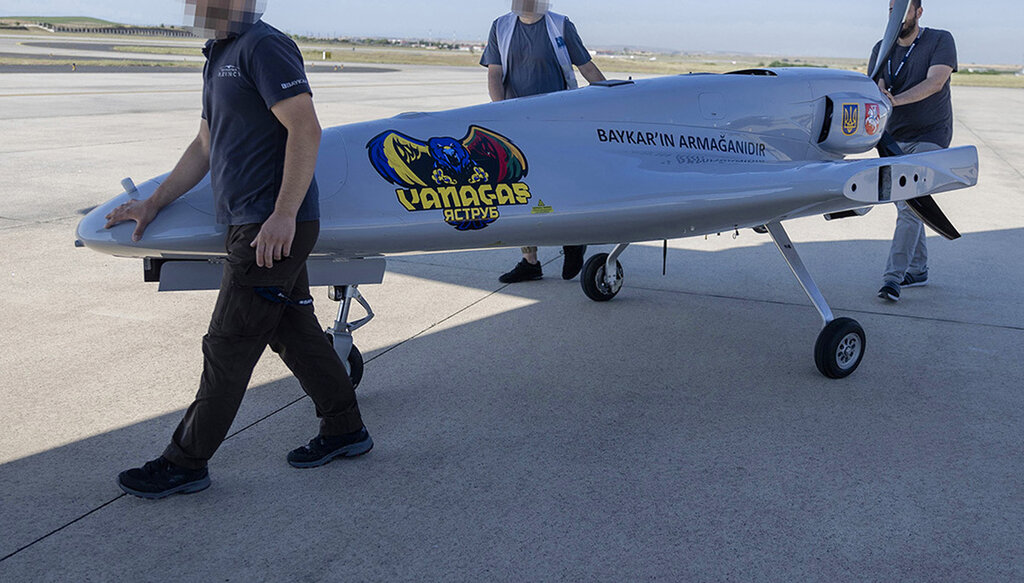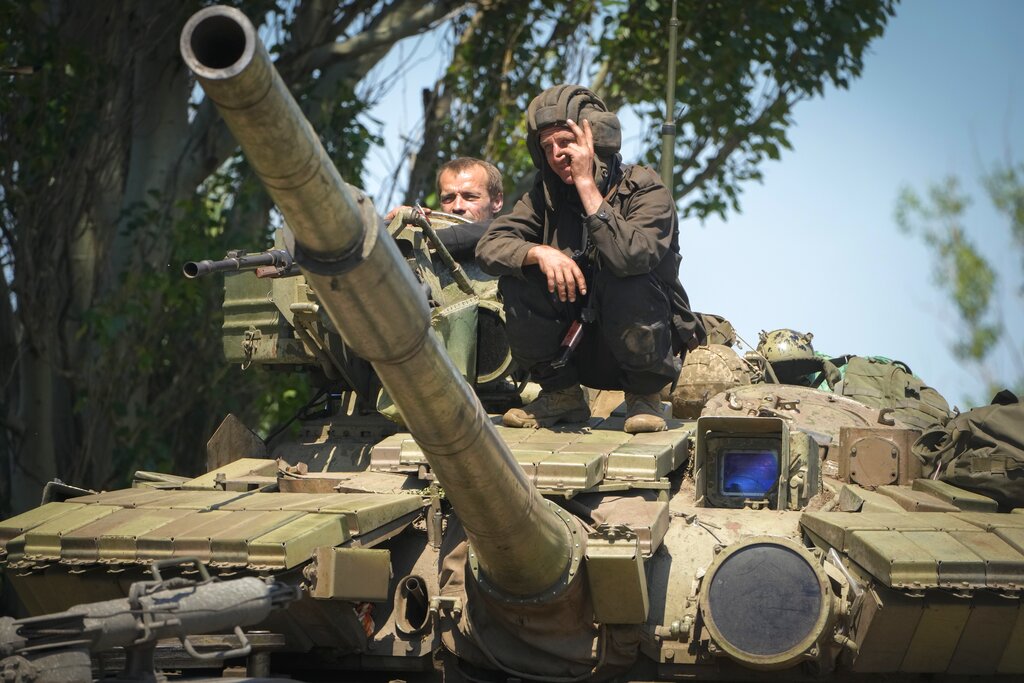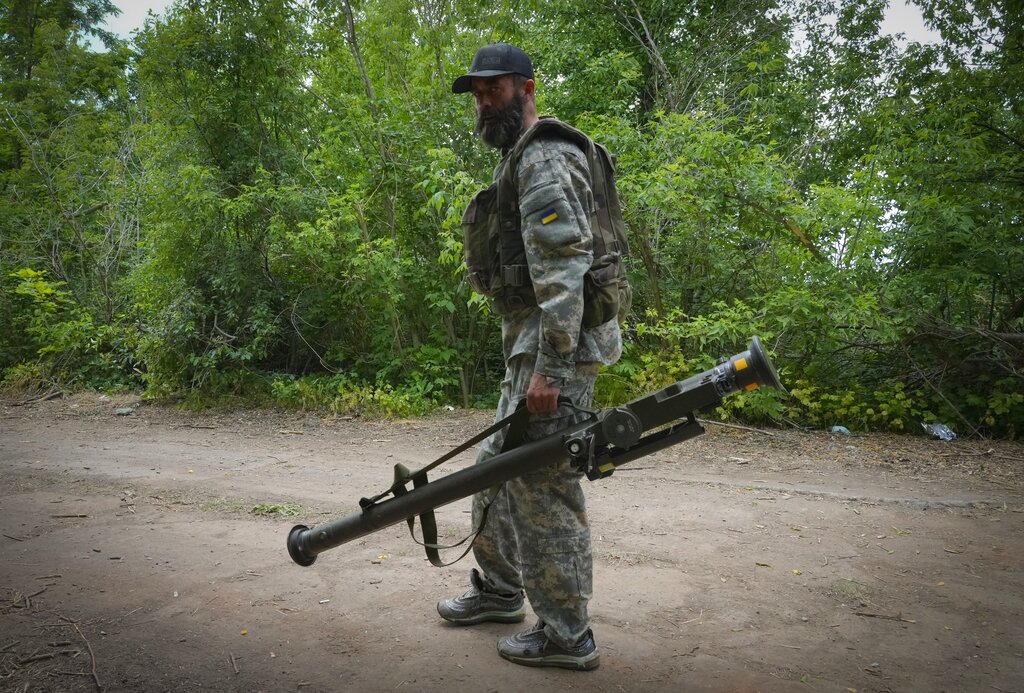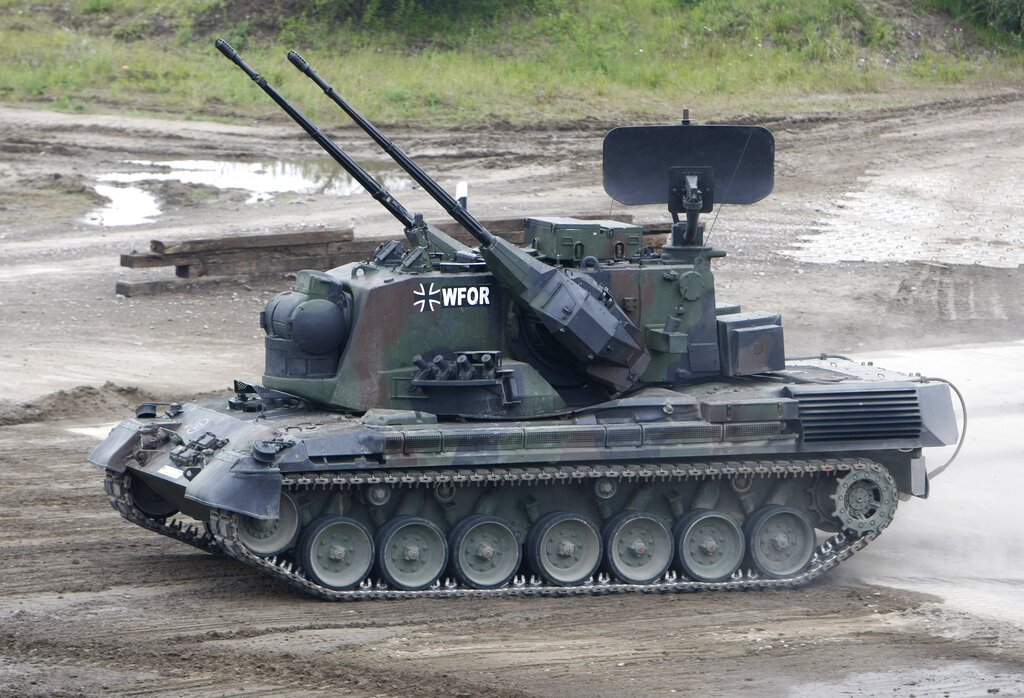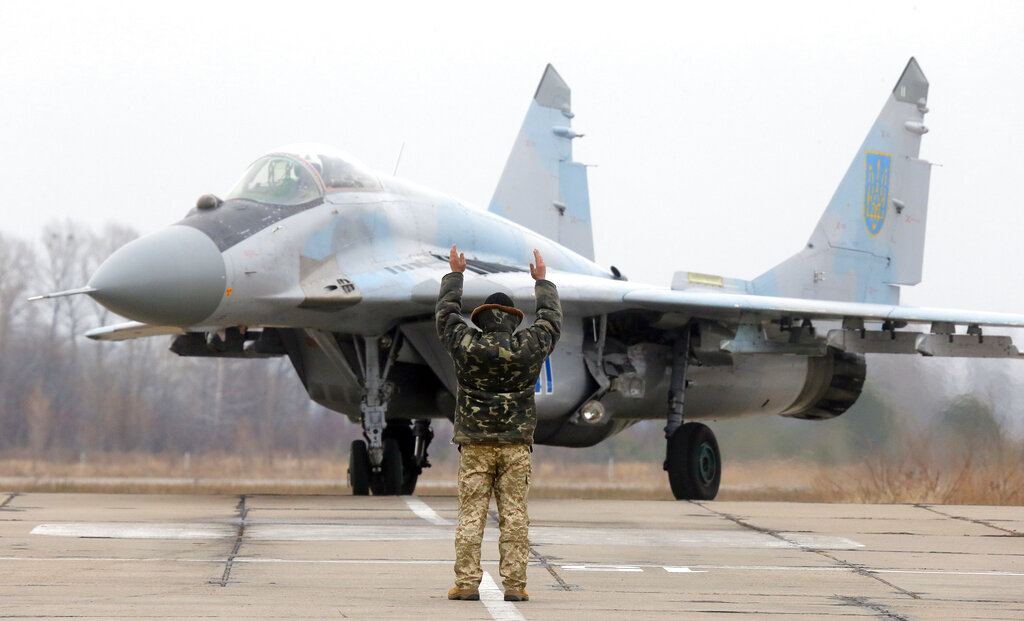(AP) — The message to U.S. lawmakers from Ukraine’s first lady, delivered amid stark and graphic images of civilian bloodshed, couldn’t have been clearer: After nearly five full months since Russia launched its invasion, Olena Zelenska said that her country needs more Western weapons.
Ukrainian President Volodymyr Zelenskyy sent her to Washington to appeal directly to U.S. Congress for air defense systems.
The appeal Wednesday came as Russia suggested it plans to grab broader areas beyond the industrial region of eastern Ukraine known as the Donbas, with Foreign Minister Sergey Lavrov emphasizing that Moscow also claims the Kherson region and part of Zaporizhzhia and will “continuously and persistently” expand its gains elsewhere.
The billions of dollars in Western military assistance have been crucial for Ukraine’s efforts to fend off Russian attacks, but officials in Kyiv say the numbers are still too small to turn the tide of the war.
A look at what Ukraine has received so far:
HIMARS ROCKET LAUNCHERS
The HIMARS systems supplied by the U.S. and similar M270s from Britain have significantly bolstered the Ukrainian military’s precision-strike capability.
The HIMARS and M270 have a longer range, a much better precision and a faster rate of fire compared with Soviet-designed Smerch, Uragan and Tornado multiple rocket launchers used by both Russia and Ukraine.
The truck-mounted HIMARS launchers fire GPS-guided missiles capable of hitting targets up to 50 miles away, a distance that puts them out of reach of most Russian artillery systems. The mobile launchers are hard for the enemy to spot and can quickly change position after firing to escape airstrikes.
The Ukrainian military so far has received a dozen HIMARS and several M270 systems, but it already has used them to successfully target Russian ammunition and fuel depots in eastern Ukraine, essential for supporting Moscow’s offensive. On Wednesday, Ukrainian forces reportedly used HIMARS to hit a strategic bridge in the Russia-occupied southern region of Kherson.
“HIMARS have hardly had any rest during the day or at night. Their potential has been used to the maximum,” Ukrainian military experts Oleh Zhdanov told The Associated Press. “The results have been impressive. Over 30 important Russian targets have been hit with high precision over the past two weeks.”
U.S. authorities so far have refrained from providing Ukraine with longer-range missiles for HIMARS launchers that can reach targets up to 300 kilometers (186 miles), allowing the military to hit areas deep inside Russian territory.
HEAVY ARTILLERY
Ukraine has taken deliveries of more than 200 heavy artillery systems from the U.S. and its NATO allies. They have included the U.S. M777, French CAESAR, German PzH 2000 and a few other towed and self-propelled long-range artillery systems.
The Western howitzers have some advantages over older Soviet-designed systems in the Russian and Ukrainian arsenals, but it takes time for Ukrainian crews to learn how to operate them. Their wide assortment poses obvious logistical challenges.
“Ukraine has been given a tremendous amount … of artillery equipment that’s very diverse,” said Michael Kofman, an expert on the Russian military and program director at the Virginia-based CNA think tank. “What they’ve ended up with is a petting zoo of artillery, and it’s very hard to do maintenance, sustainment and logistics.”
A more serious problem is that the numbers of Western weapons are still far too small.
Ukrainian presidential adviser Mykhailo Podolyak said last month that the country needs at least 1,000 heavy howitzers, 300 multiple rocket launchers, 500 tanks and 2,000 armored vehicles — much more than the West has provided.
“Western weapons are superior to Soviet-era analogues, but the numbers have been too small to turn the tide of the war,” Zhdanov said.
ARMOR
Ukraine has asked the West for more armor to replenish its heavy battlefield losses. The country has reportedly received over 300 Soviet-built T-72 tanks from Poland and the Czech Republic, and already has used them in combat.
The long-promised delivery of German Leopard tanks is on hold, however, a delay that has drawn an angry response in Ukrainian media and social networks.
Ukraine has taken delivery of several hundred armored personnel carriers from the U.S. and a few NATO allies, a motley collection of vehicles that hasn’t fully compensated for what it already has lost.
Western allies also have provided Ukraine with big numbers of portable anti-tank weapons, which played a key role in helping Ukrainian soldiers to decimate Russian armored convoys.
DRONES
In the early part of the war, Ukraine extensively used its inventory of Turkish-made Bayraktar TB-2 laser-guided, bomb-dropping drones to hit long convoys of Russian troops and supply columns. Bayraktars, however, have become less effective in the face of denser Russian air and electronic defenses in eastern Ukraine.
Since the war began, the U.S. and Western allies have shipped hundreds of other drones, including an unspecified number of “kamikaze” Switchblade 600s that carry tank-piercing warheads and use artificial intelligence to track targets. But their range is limited, and they can only stay aloft for about 40 minutes.
Ukraine has pushed strongly for more advanced long-range drones that can survive radio interference and GPS jamming and rely on satellite communications for control and navigation.
AIR DEFENSE SYSTEMS
The U.S. and other NATO allies have provided Ukraine with over 2,000 portable air defense missile systems, or MANPADS, such as Stingers and other similar weapons.
Such compact systems are efficient against combat helicopters and low-flying jets, and the Ukrainian military has used them to inflict significant losses on the Russian air force, restricting its capability to provide close air support to ground forces and helping slow the pace of Moscow’s offensive.
At the same time, Ukraine also has prodded the West to supply it with medium- and long-range air defense systems that would be capable of downing cruise missiles and high-flying aircraft.
It has received several Soviet-built S-300 long-range air defense systems from Slovakia, the type of weapons the Ukrainian military has long operated.
The U.S. also has pledged to give Ukraine two NASAMS mid-range air defense systems.
Germany has promised to supply Ukraine with 30 Gepard self-propelled anti-aircraft guns, but they have yet to arrive.
WARPLANES
Since the start of the invasion on Feb. 24, Ukraine has urged Western allies to provide it with warplanes to challenge Russia’s air superiority.
However, the U.S. and its allies have been reluctant to give Ukraine the fighter jets it asks for, fearing it would provoke an escalatory response from Moscow, which has warned NATO that supplying Ukraine with combat aircraft could be tantamount to joining the conflict.
In March, the Pentagon rejected Poland’s proposal for handing over its Soviet-built MiG-29 fighter jets to Ukraine by transferring them through a U.S. base in Germany, citing a high risk of triggering a Russia-NATO escalation. Ukraine has its own fleet of MiG-29s, but it’s unclear how many of those and other jets are still in service.
Earlier this month, Slovakia announced an intention to give its MiG-29 fleet to Ukraine as it awaits delivery of U.S. F-16 fighter jets, but no action has been taken.


